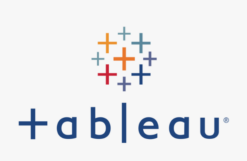Duration: 3 days – 21 hrs.
Overview
The Introduction to MySQL course covers the basics of the SQL language as implemented by MySQL. The course is designed to give delegates practical experience in writing SQL statements using the MySQL client program and MySQL Workbench. The basic SQL statements, including the use of SQL functions and the basic table and view handling statements are introduced.
Objectives
- Create and alter a MySQL database and query
- Modify data held within such a database
Audience
- Anyone involved in administering and developing on a MySQL relational database management system (RDBMS). Basic familiarity with database concepts is helpful, but not essential.
- Database Administrators
- Database Designers
- Administrator
Pre- requisites
- Basic knowledge in MySQL will be helpful.
- Experience with any other web framework will be helpful.
- Basic knowledge in terminal commands
Course Content
Day 1
Introduction to MySQL
- Course Introduction
- Administration and course materials
- Course structure and agenda
- Delegate and trainer introductions
Session 1: DATABASE CONCEPTS
- What is a database?
- Database management systems
- Tables, rows and columns
- Indexes, primary keys, unique constraints and foreign keys
- Client-Server architecture
- Supported data types
- Storage engines and table types
- The Information_Schema and MySQL Databases
- Exercise: Using a MySQL Database
Session 2: USING THE MySQL CLIENT
- What is the MySQL client?
- Getting started and Logging in
- Selecting a database
- Client commands
- Entering and executing SQL statements
- Retrieving previous commands
- Creating,editing and executing SQL files
- Redirecting output into a file
- Command line execution of MySQL Scripts
- Exercise: Using the MySQL Client
Session 3: BASIC SELECT
- The SQL SELECT statement
- Case sensitivity
- Quotes
- Statement terminator
- Syntax conventions
- The select clause
- The FROM clause
- Conditions and the WHERE clause
- Logical operators
- The ORDER BY clause
- Column aliases
- Arithmetic expressions
- Precedence of operators
- Exercises: Querying the sample database
Session 4: LIMIT, UNION AND AGGREGATE FUNCTIONS
- The LIMIT clause
- UNION
- UNION ALL
- Aggregate functions
- The GROUP BY clause
- Using Rollup with GROUP BY
- The HAVING clause
- Exercises: Using Limit,Union and Aggregate Functions
- Introduction to MySQL Training Course
Day 2 Session 5: SUBQUERIES AND JOINS
- Subqueries
- Cartesian products
- Joins with original syntax
- Table aliases
- Natural joins
- Join using
- Join on
- Multi-table joins
- Exercises: Using Subqueries and Joins
Session 6: NUMERIC AND CHARACTER FUNCTIONS
- Function types
- Testing functions
- Numeric functions
- Character functions
- Exercise: Using Numeric and Character Functions
Session 7: DATE, TIME AND OTHER FUNCTIONS
- Date and time column types
- Date and time formats
- The date format function
- Functions to return date time
- Functions to extract components from date time
- Date time arithmetic
- Miscellaneous functions
- Exercise: Using Date,Time and other functions
- Introduction to MySQL Training Course
Day 3
Session 8: DATABASES AND TABLES
- Creating a database
- Selecting a database
- Obtaining database metadata
- Table properties
- Creating tables ▪ Autoincrement
- Show create table
- Column operations
- Constraint operations
- Copying tables
- Renaming tables
- Changing engine for tables
- Obtaining table metadata
- Altering tables
- Dropping tables
- Temporary tables
- Memory tables
- Exercises: Maintaining databases and tables
Session 9: INDEXES AND VIEWS
- What is an index?
- Structure of an index
- Creating an index
- Reviewing indexes
- Composite indexes
- Altering a table to add an index ▪ Dropping indexes ▪ What is a view? ▪ Creating views
- View restrictions
- Dropping views
- Exercise: Maintaining indexes and views
Session 10: MANAGING DATA
- Inserting rows
- Replacing rows
- Updating rows
- Deleting rows
- The truncate statement
- The COMMIT and ROLLBACK commands
- Savepoints •Implicit commits
- Exercise: Managing data
Session 11: ACCESS CONTROL
- Creating users
- Renaming users
- Dropping users
- Granting privileges
- Revoking privileges
- Exercise: Creating users, granting and revoking
Session 12: IMPORT AND EXPORT
- Exporting using SQL
- Importing using SQL
- Exporting from the command line
- Importing from the command line
- Exercise: Export and import data








